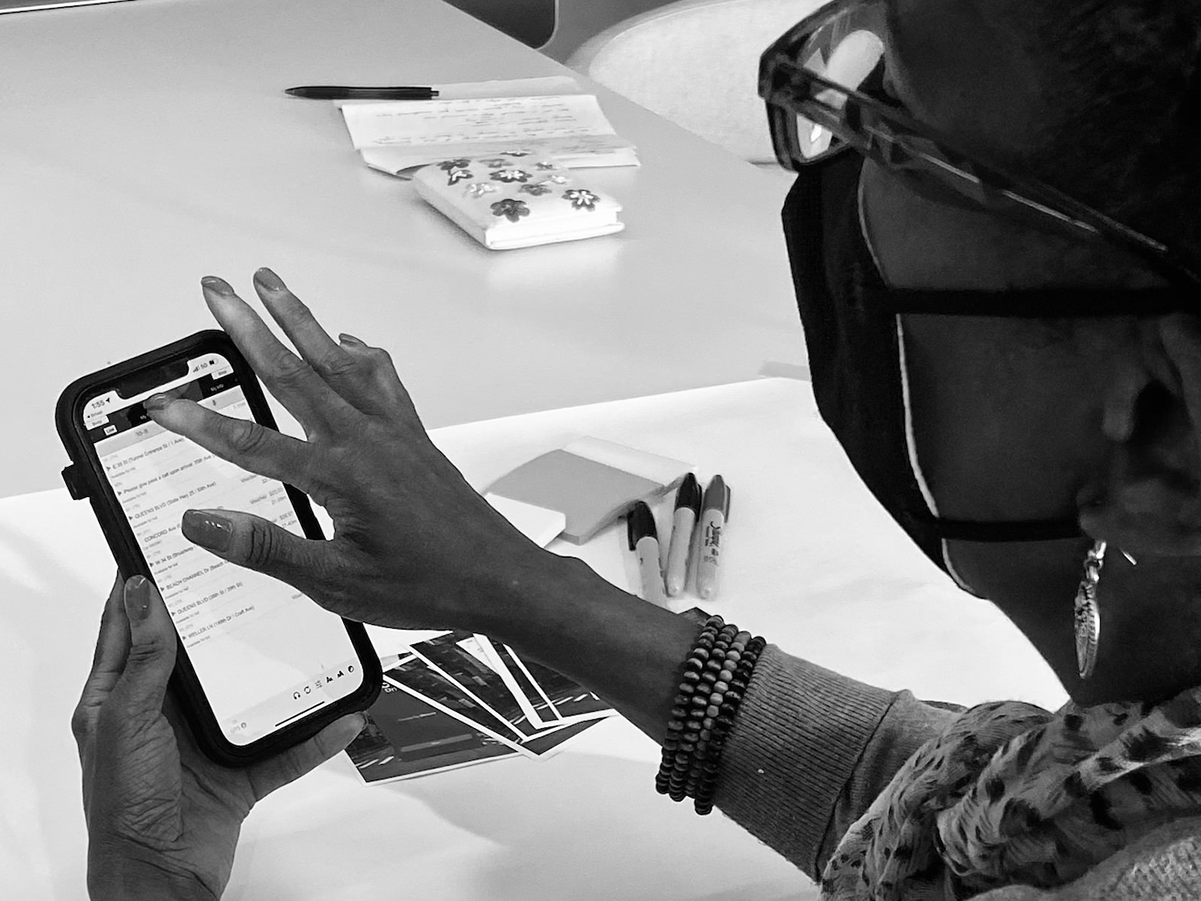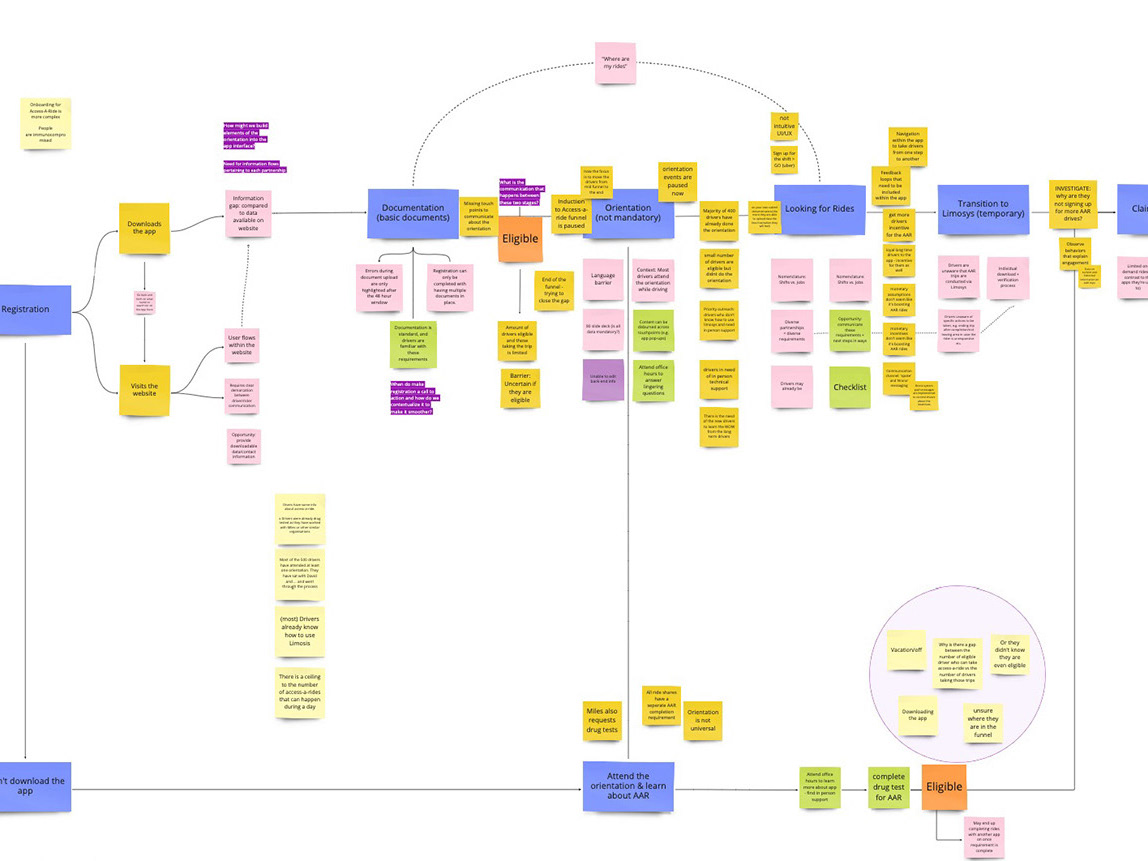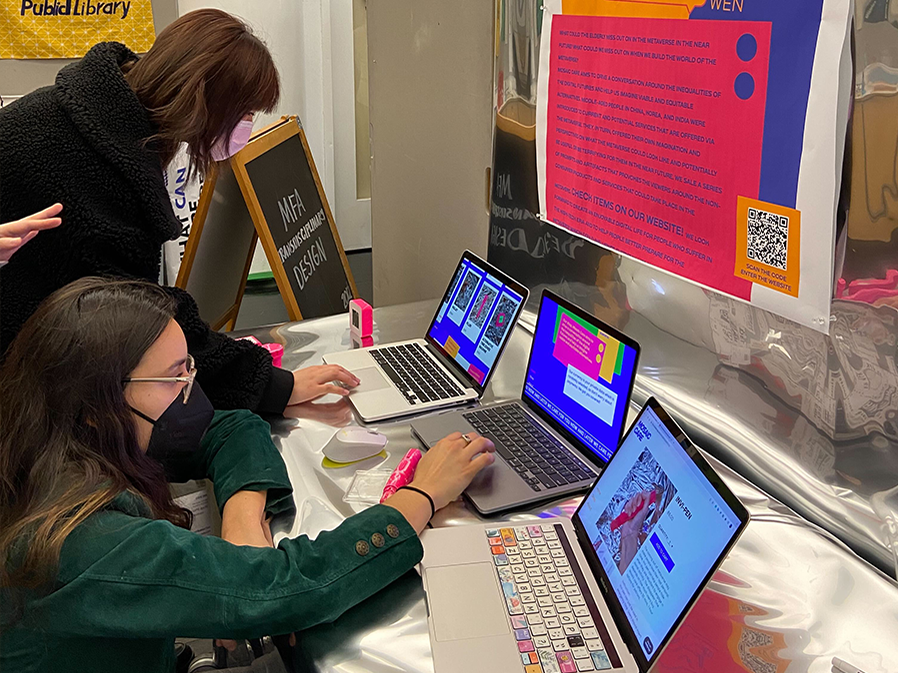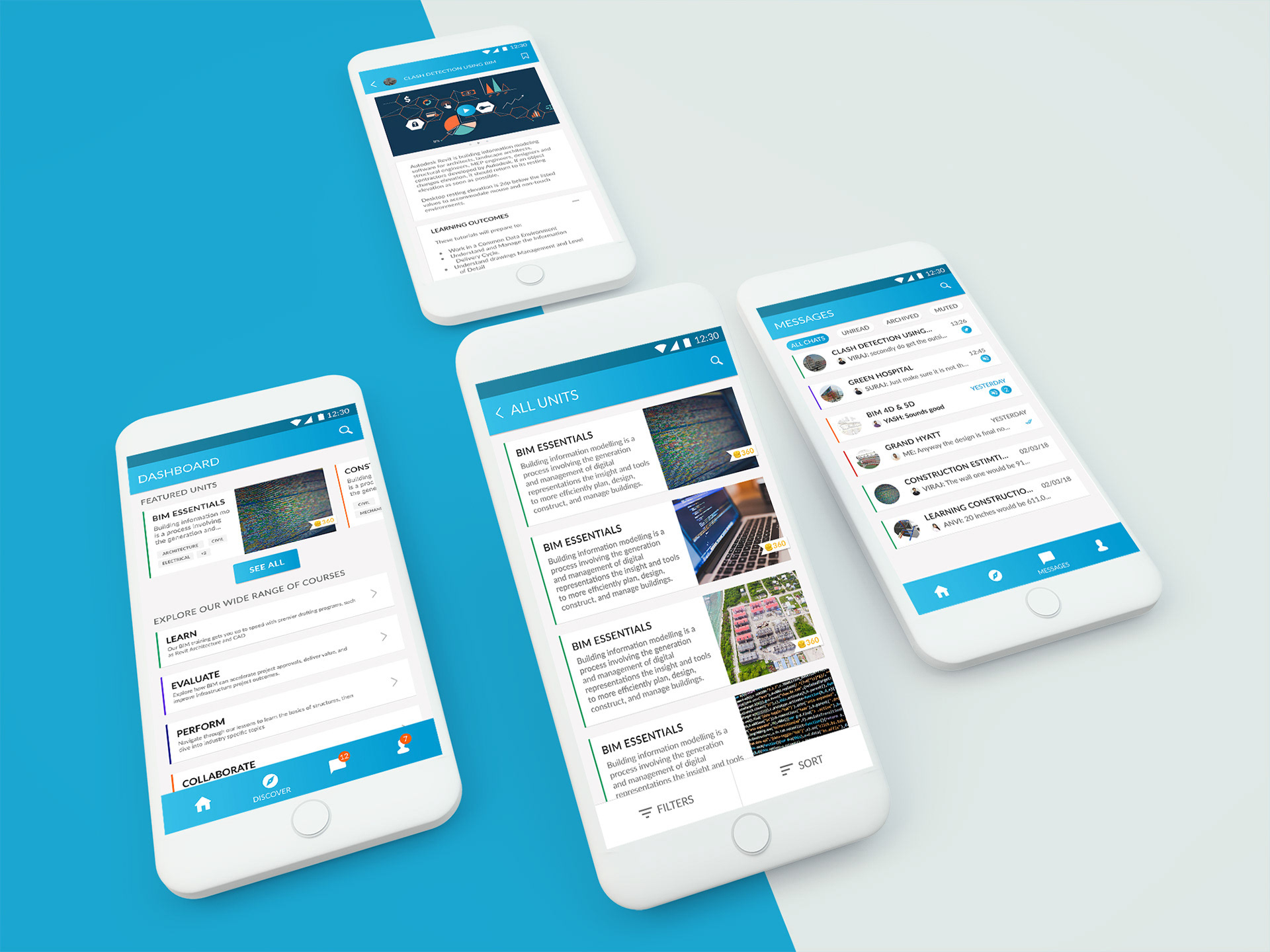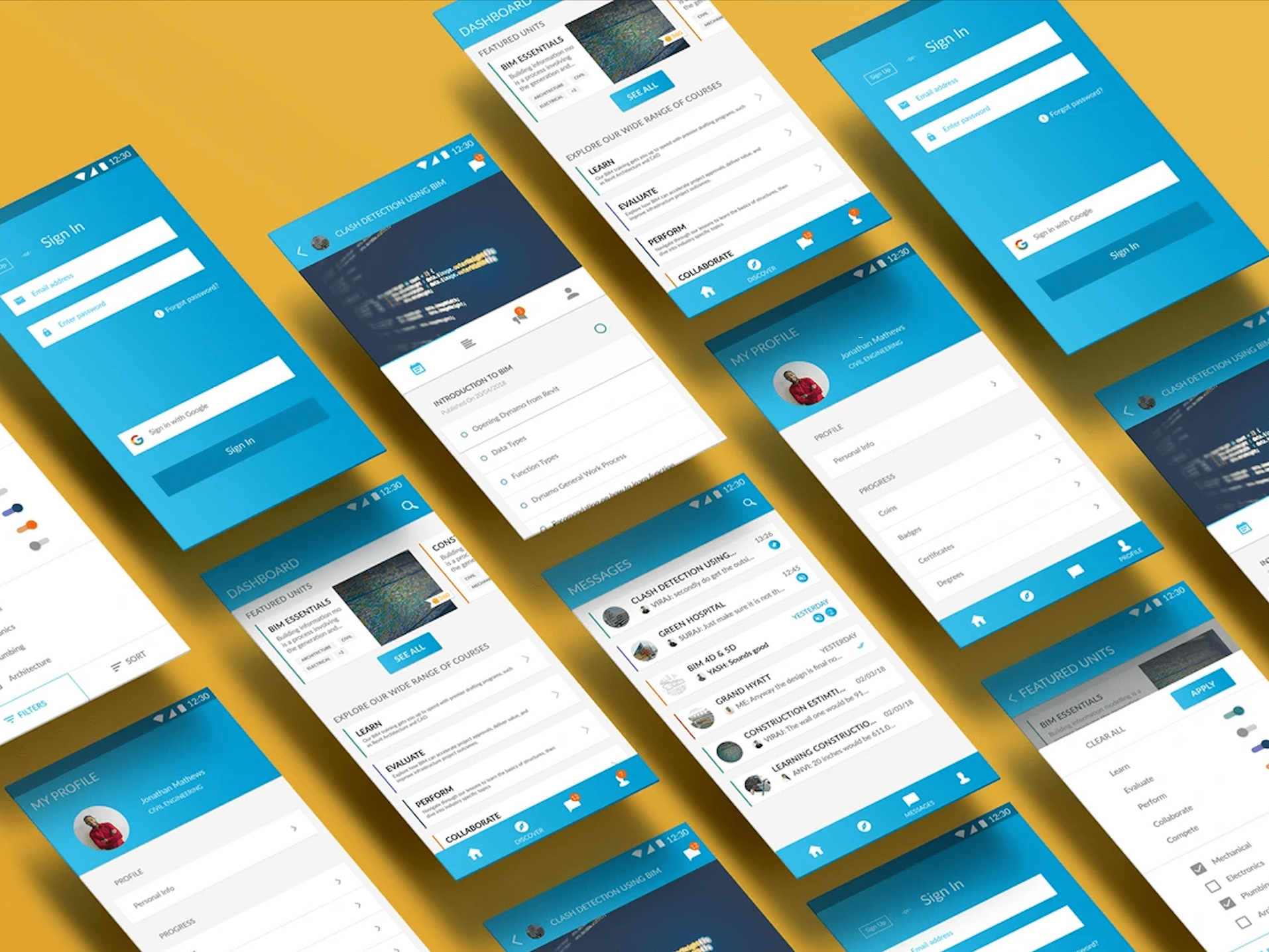Reframing Access: A Design-Led Research Exploration of Assam’s State Budget Digital Platform
Context
This case study captures a design research investigation on how to improve the public accessibility of Assam’s State Budget digital platform. It seeks to enhance budget comprehension and information relevance by using ethnography inquiry to resolve public access barriers such as systemic friction, design inequities, and budgetary cognition gaps by leveraging the systems design framework. Rooted in critical analysis and civic creativity, the approach involves user research, stakeholder mapping, and speculative reasoning to answer not only the ‘how’ of the design process, but also ‘which social group matters most’ for ‘whom’ it is intended. This aligns with the work of Sanders & Stappers, which they define as “design research for social innovation.” The approach combats preconceived notions of bounded outcomes to invite contemplation and develop iteratively while recognising that civic data legibility entails social meaning beyond the interface.
Initial Area od Inquiry
"Design a digital platform, a State Budget Explorer for Assam to make budget data understandable and usable for multiple stakeholders."
My Approach
Grounded in research inquiry, I focused on three stakeholder groups whose roles are critical yet often underrepresented in budget conversations. Panchayat Leaders & Ward Members serve as vital bridges between policy and on-the-ground realities, mediating how budget decisions unfold in local communities. School Principals & Teachers shape not only the reception of education-related allocations but also foster civic literacy, making them key agents of long-term change. Finally, Common Citizens & Voters remain the largest beneficiaries of welfare schemes, yet they face systemic barriers to accessing and acting upon budget information. Prioritizing these groups allowed me to center those for whom budget transparency is not a technical feature but a pathway to everyday agency and participation.
Interview Guides
Semi-structured interview guides were developed to support stakeholder conversations, incorporating design-led inquiry techniques and probing methods to elicit deeper, context-rich insights. These intentional dialogues aimed to move beyond surface-level responses and uncover the lived experiences, motivations, and systemic frictions encountered by participants.
Stakeholder Analysis
I mapped four key stakeholder groups using a Power and Interest Matrix: Panchayat Leaders and Ward Members, School Teachers, and Common Citizens across urban and rural contexts. The analysis surfaced a common thread, all groups exhibit high interest in the state budget, yet their influence on budget decisions remains limited and uneven.
Given the constraints of time and resources, I conducted a focused set of interviews to ground this analysis in lived experiences. These conversations, though limited in number, offered valuable entry points to understand user motivations, barriers, and needs.
This insight reframed the design challenge from simply informing users to empowering those who are most affected yet least equipped to access or act on budget information. I developed mindset narratives for each group to anchor future design decisions in empathy and context, feeding directly into personas and journey maps.
Mindsets
Before conducting interviews, I developed preliminary mindsets for key stakeholder groups: urban citizens, rural citizens, school teachers, and panchayat leaders. In Human-Centered Design, creating these initial mindsets is crucial. They help anticipate users' perspectives and behaviors, guiding the research to uncover deeper insights.
These mindsets are based on my assumptions and will be refined as I gather more data. They serve as a foundation for understanding user needs and will inform the development of user personas and user journeys later in the process.
Mindsets as Early Hypotheses
Before conducting interviews with the stakeholders, I created preliminary mindsets for each stakeholder group to surface early assumptions about their needs, frustrations, and motivations. This step grounded my inquiry in empathy and allowed me to frame more intentional, design-led interview questions. The mindsets acted as provisional hypotheses, shaping the research focus, anticipating gaps, and setting a foundation for deeper synthesis as the project evolved.
Reading Between the Lines: An Abductive Approach
I am incorporating abductive reasoning as a key part of my synthesis process. Abduction is a creative form of reasoning where we make the best possible explanation for surprising or partial observations, not by collecting endless data, but by making imaginative, informed guesses that lead to new hypotheses and design moves (source).
As I analyse interview responses, I will not only cluster obvious needs and frustrations of users but also look for moments that seem unexpected, contradictory, or revealing. From these, I will form imaginative hypotheses about underlying patterns and use them to frame sharper insights and actionable "How Might We" questions that will guide the design of the Assam State Budget Explorer.
Abduction allows us to move beyond surface-level findings into the deeper layers of meaning that shape user experience, grounding the final design in both lived realities and critical inference.
From interviews to Abductive Hypotheses
After conducting a series of interviews with key stakeholder groups, I paid close attention to moments where their words surprised, contradicted, or revealed deeper tensions beyond what I had anticipated. These unexpected moments were not treated as anomalies but they became starting points for my creative inquiry.
Through an abductive synthesis process, I surfaced a set of working hypotheses, imaginative yet grounded explanations about the hidden dynamics shaping how citizens, teachers, and local leaders interact with the state budget. These hypotheses are critical because they move the research beyond summarising needs. They open new ways of framing the design challenge itself. By treating uncertainty as fertile ground, abduction allows the design to be rooted in both lived realities and systemic imagination and setting the stage for more contextually grounded interventions.
Pattern Finding & Insight generation
After generating abductive hypotheses from surprising user quotes, I clustered them into two emergent themes: Trust and Communication. These clusters revealed underlying forces shaping how citizens experience the state budget, not just as information, but as something they must navigate, interpret, and trust. From these patterns, I crafted insight statements that now anchor the design direction moving forward.
Revisiting the Stakeholder Map
As new insights surfaced, I revisited the Power-Interest Matrix to stay aligned with emerging realities. I repositioned School Teachers closer to "Manage Closely," reflecting their role in shaping civic literacy, and nudged Rural Citizens slightly higher in interest due to their deep reliance on public schemes. I also noted Students and Youth as an emerging stakeholder group, hinting at future civic engagement opportunities.
Thick Data Meets Big Data
Capturing Signals
I deliberately fused Assam’s public budget data (the “big data”) with on-the-ground interviews and stories (the “thick data”) so I could capture both the macro trends and real human context. Triangulating these sources validated my insights: research shows combining multiple data streams gives a holistic picture (source), so seeing the numbers alongside people’s stories ensured I wasn’t just guessing. For example, raw figures showed an annual ₹8,402Cr Panchayat budget, but interviews revealed villagers couldn’t trace how those funds trickled down; that directly inspired me to build a layered dashboard letting anyone to drill from the ₹8,402Cr down to each scheme. Likewise, I grounded every “How Might We” question and feature in both the quantitative signals and user frustrations, so the design tackled real pain points (language barriers, trust issues, etc.) rather than abstract ideals. This synergy of big and thick data kept the Explorer grounded and impactful: by treating Assam’s budget as a living, navigable experience for citizens, I ensured the tool truly meets diverse stakeholders’ needs.
SIGNAL:
Tracing the ₹8,402 Crore Pathway
Though the Panchayat & Rural Development Department manages a massive ₹8,402 crore budget, our interviews revealed users can’t easily follow how those funds reach village‐level schemes. This insight led us to design a layered dashboard, interactive infographics plus contextual tooltips that lets anyone drill from the ₹8,402 crore total down to individual disbursements.
Tracing the ₹8,402 Crore Pathway
Though the Panchayat & Rural Development Department manages a massive ₹8,402 crore budget, our interviews revealed users can’t easily follow how those funds reach village‐level schemes. This insight led us to design a layered dashboard, interactive infographics plus contextual tooltips that lets anyone drill from the ₹8,402 crore total down to individual disbursements.
Goswami, Debajyoti. 2023. “A Study on Rural Development in Assam: An Overview.” International Journal of Management, IT & Engineering 13, no. 08 (August): 69–80. https://www.ijmra.us/project%20doc/2023/IJME_AUGUST2023/IJMIE7Aug23-DG.pdf.
SKOCH Group. 2024. “SKOCH State of Governance 2023 – Full Report.” INCLUSION. February 2024. Accessed April 28, 2025. https://inclusion.in/state-of-governance/2024/02/full-report/.
SIGNAL:
36 Days of Work, 100 Days of Promise
Although the MGNREGA budget for Assam reached an unprecedented ₹86,000 crore in FY 2024-25, rural households received just 35.6 days of employment on average, just over one-third of the statutory 100 days, highlighting a critical delivery gap between policy allocation and everyday livelihoods.
36 Days of Work, 100 Days of Promise
Although the MGNREGA budget for Assam reached an unprecedented ₹86,000 crore in FY 2024-25, rural households received just 35.6 days of employment on average, just over one-third of the statutory 100 days, highlighting a critical delivery gap between policy allocation and everyday livelihoods.
Mahatma Gandhi NREGA MIS Dashboard, “Average days of employment provided per household (Assam),” FY 2024-25: 35.69 days. Accessible via the National NREGA Portal.
From Insights to HMWs
Drawing from a deep synthesis of qualitative interviews and quantitative public data, I framed these HMWs to bridge real-world frustrations with design-driven opportunities. Each statement captures not just a functional need, but an emotional gap, trust, agency, and access leaving space for reimagining the Assam state budget not as a static document, but as a living, navigable experience that citizens can act upon. These questions now anchor the UX design exploration ahead.
contextual scan
To ground the Assam Budget Explorer in real world usability test and I conducted a contextual scan of the Voter Services Portal by the Election Commission of India. This exercise helped me unpack how a high stakes public platform simplifies complex government workflows through card based layouts, guided task flows, multilingual support, and progressive information disclosure. By identifying what worked and what created friction, I was able to extract actionable insights that now inform the design logic, accessibility priorities, and information clarity of my own platform.
To ground the Assam Budget Explorer in real world usability test and I conducted a contextual scan of the Voter Services Portal by the Election Commission of India. This exercise helped me unpack how a high stakes public platform simplifies complex government workflows through card based layouts, guided task flows, multilingual support, and progressive information disclosure. By identifying what worked and what created friction, I was able to extract actionable insights that now inform the design logic, accessibility priorities, and information clarity of my own platform.
Proto-Personas & Assumptions
Following a lean UX process, I translated each proto-persona into a set of clear, testable user assumptions that are grounded in observed behaviors, not speculation. For instance, rather than assuming what Panchayat leaders need, I captured specific hypotheses like “Leaders prefer Assamese-language budget breakdowns to explain government schemes in Gram Sabhas.” These statements cut through ambiguity, helping the design process stay tied to real-world pain points, language barriers, low trust, and limited access and not abstract notions of ‘user needs.’
Why it matters: Why it matters: These assumptions now act as design guardrails. They prevent feature creep and keep every screen focused on enabling trust, legibility, and participation. Every feature I build from here on will be tie back to a real user need and not a nice to have addition or a personal bias.
Information Architecture
The information architecture was designed with clarity, accessibility (WCAG), and purpose at its core. It is shaped around the lived workflows of Panchayat leaders, schoolteachers, and citizens alike. Each pathway reflects their specific needs: from tracking scheme progress and downloading Assamese voice notes for Gram Sabhas, to accessing ready-to-teach budget content and monitoring local development projects. This structure helped me cut through complexity early and shape a focused, user-aligned experience. As Nasir Ahmed appropriately puts it, “You can’t create a solid IA without interacting with the entire design team” and in this case, my collaboration is with the research, content, and technical thinking played a vital role in ensuring the IA stayed both grounded and expandable.
User Flows
I crafted key user flows to map critical decision points where trust could be built in Assam’s state budget platform. By visualising how Panchayat Leaders could share data, Teachers could integrate it into lessons, and Citizens could engage with hyper-local outcomes, these flows ensure every design choice directly tackles real pain points of users uncovered during research.
I crafted key user flows to map critical decision points where trust could be built in Assam’s state budget platform. By visualising how Panchayat Leaders could share data, Teachers could integrate it into lessons, and Citizens could engage with hyper-local outcomes, these flows ensure every design choice directly tackles real pain points of users uncovered during research.
From User Flows to Functional UI
Following an exhaustive design process, the Assam State Budget Explorer resulted in a set of high fidelity, interactive user interface designs. These final interactive prototypes are a blend of research insights and actionable design, showcasing the translation of findings into a user experience. The result is more than a static visual mock-up; it is a navigable working design, validating the vision that was conceived.
The journey from comprehensive design research to a tangible interface was both challenging and illuminating. Every phase of research conducted, including ethnographic interviews, stakeholder mapping, persona development, and user flow creation, informed the interface decisions. For example, some of the trust gap concerns among citizens informed how data sources and rationale would be presented in the UI, while some insights into teachers’ professional needs and activities influenced the content access features. Bridging the research-design gap required reducing layered insights into clear design answers that were anchored to user knowledge, ensuring that every component onscreen stemmed from the design ethos. This synthesis reinforced that thoughtful UX design is research substantiated.
Multiple pivotal design considerations were instrumental in arriving at the Explorer, where there is a tradeoff between user facing features and system backstage accessibility elements.
User Centred Interface: The overview UI kits employ a clean card based layout alongside a layered progressive disclosure of information. Users always begin with an overview and subsequently drill down into details at their pace. For example, users can start with a high level overview of the state budget and subsequently delve into department allocations and local schemes step by step. This approach keeps the experience digestible and data overwhelm is effectively managed, which was a major painpoint in user experience research.
Robust Data Architecture: Backstage, system architecture was organized along the lines of the budget hierarchy to facilitate this layered exploration. We structured data such that a user's click on a department retrieves scheme level details seamlessly with pertinent context. This technical design decision addresses interface responsiveness and accuracy as users traverse complicated data networks. This decision was made out of trust: front stage experience brings transparency only when data relationships and their interdependencies are made clear and dependable behind the scenes.
Inclusive and Accessible Design: As noted, inclusivity was a design factor both in front of and behind the curtain. The user interface is multilingual, offering English and Assamese, and it follows WCAG guidelines on accessibility. This required using appropriate contrast colours and typefaces, providing text and voice notes, and accounting for different devices and connection speeds. The device independent usability with speech enabled text in Assamese and optimisation for low bandwidth use. These mechanisms may spatially appear as user friendly design. Elders in the village who use basic smartphones along with city dwellers like policy analysts can use the platform with ease.
This project offered rich insights for me as a more experienced design researcher and UX designer. It reinforces once again that the most effective design solutions come from adhering to research findings at every step in the process. Even with years of experience, I was reminded to turn off preconceptions about how a solution should look, letting user feedback shape and often shift the design. The journey emphasized the value of integrating research, design, as well as the technical arms of a project. Engaging data experts, content professionals, and the users as collaborators allowed me to design an experience that was both achievable and meaningful to the users. Further, working on a tool of this nature underlined for me how crucial it is to ensure the design facilitates access and fosters trust. I learned to treat these not as “add ons” but as core design goals from the very start.
Anticipating future developments, the Assam State Budget Explorer has potential scope that could fuel inspiration for other works. Though this case study concludes with a comprehensive design instead of a functioning product, there is room for growth should the circumstances permit. As an example, the platform could be enhanced to include real-time budget data updates each fiscal year, or the system could be applied to other areas that require budgetary transparency. Furthermore, the current framework could accommodate community feedback mechanisms or teaching tools that strengthen public interaction with the budget data. While these are not active agendas, they demonstrate that the design captures versatility and expansion in its essence.
To conclude, the Assam State Budget Explorer illustrates the value that comes from transforming thorough research into something useful. This case shows that even a government budget, which is routinely viewed as dry and impenetrable, can, with the right attention, be transformed into a dynamic, participatory system. Because I ended this project with high fidelity, functional designs, I not only have concrete outcomes, but also reflections to inform future work. This final design showcases the power of a research driven, people first approach, and provides a foundation for others in the continued effort to make public data accessible and empowering.
